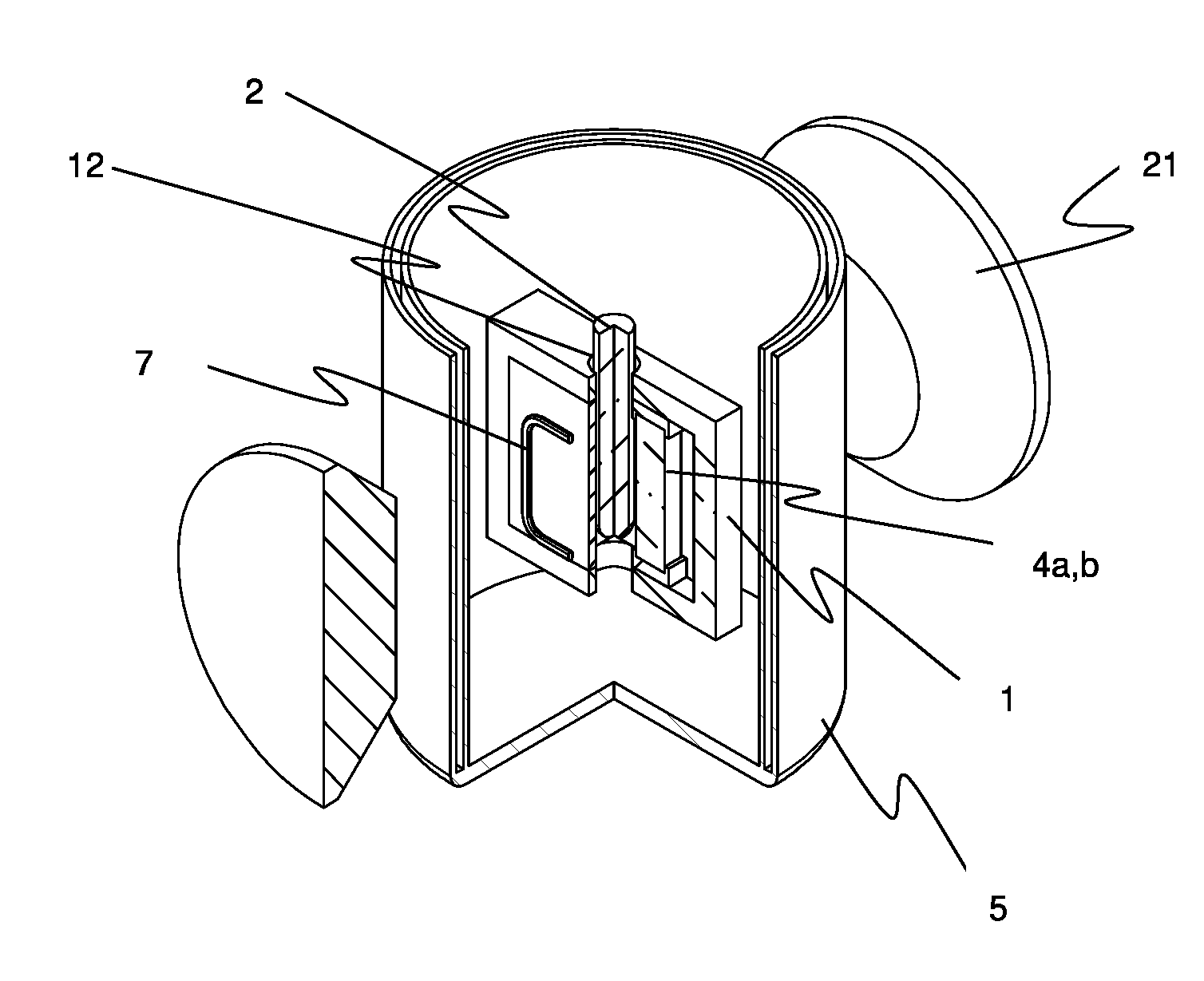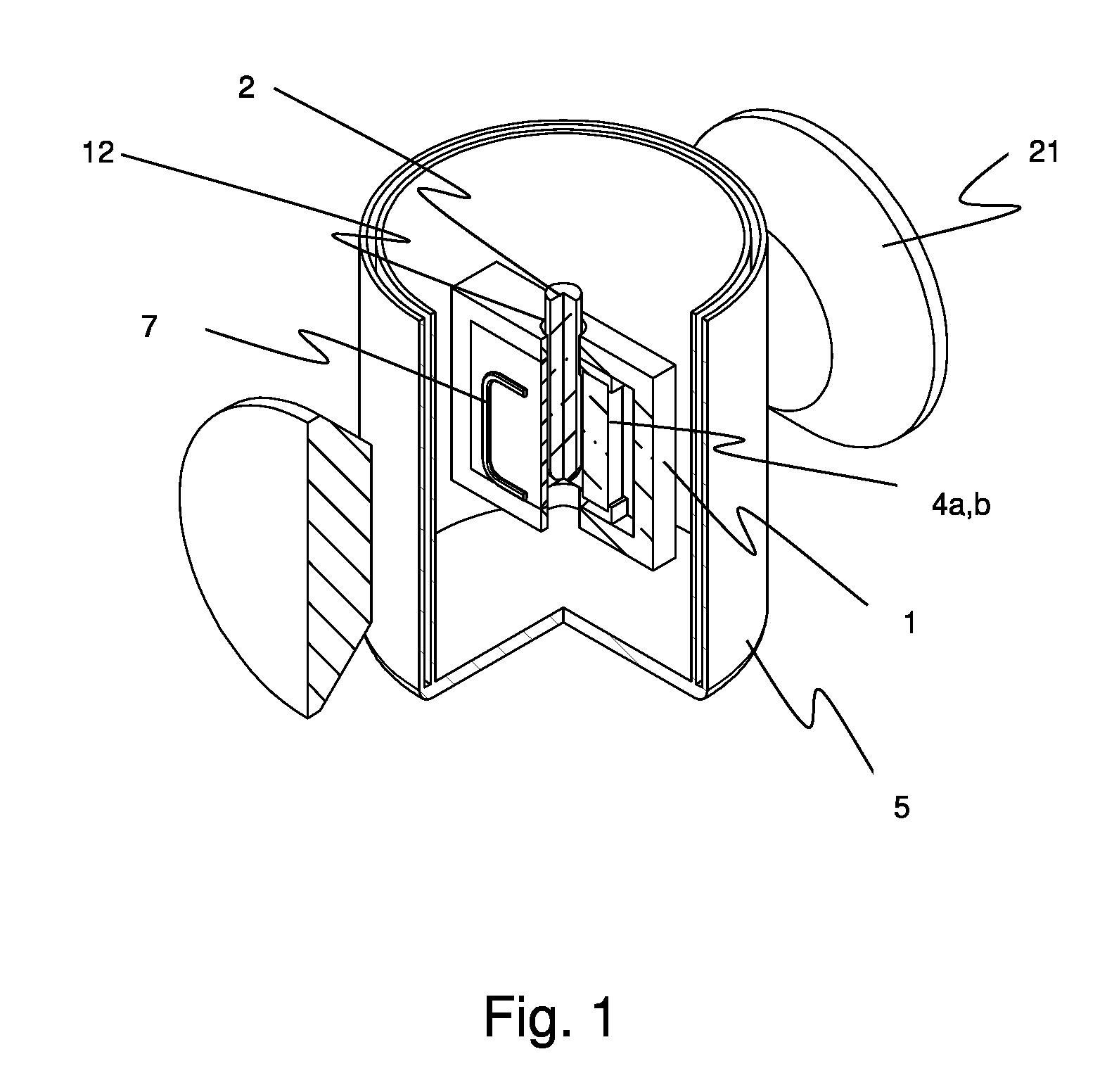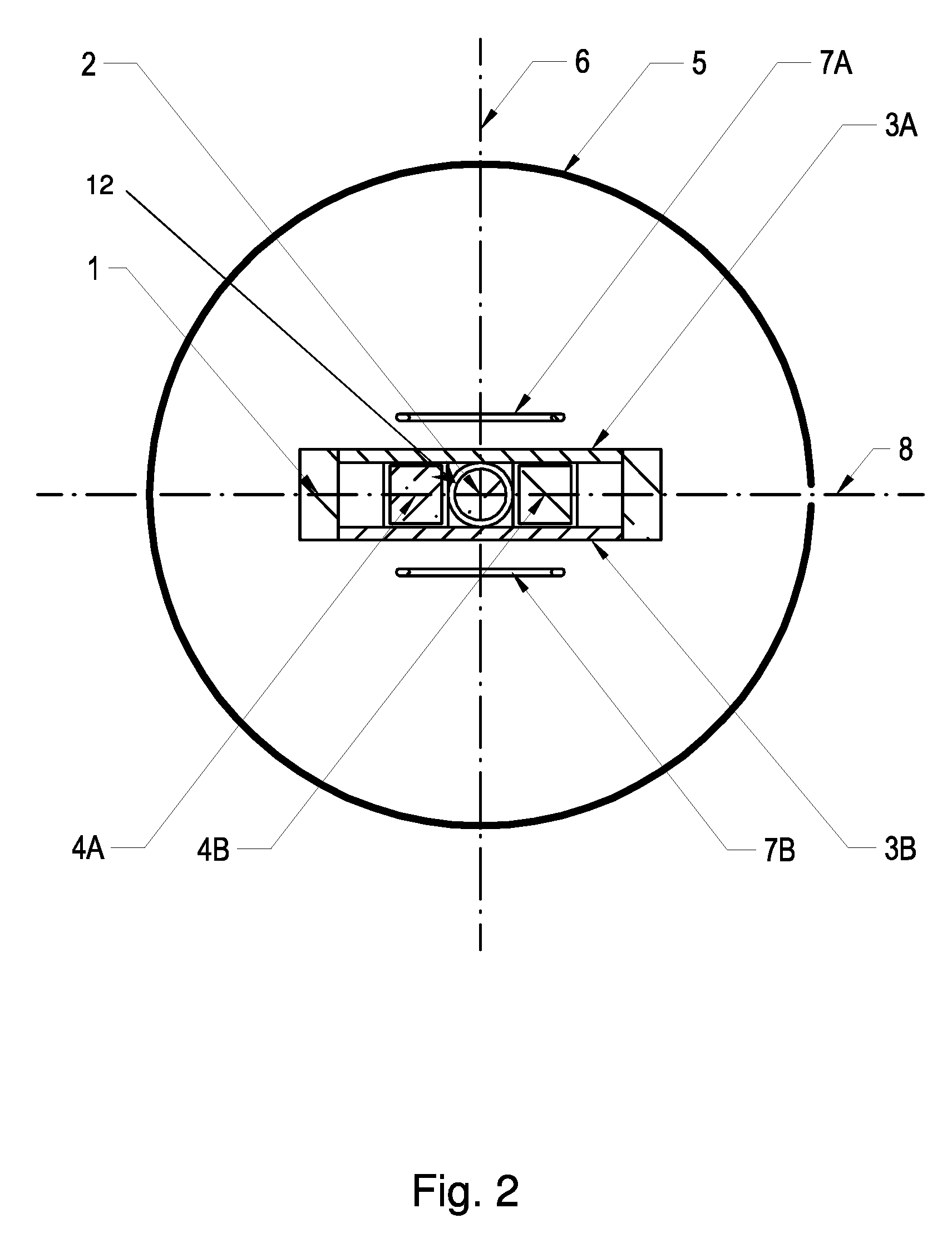EPR Microwave Cavity for Small Magnet Airgaps
a micro-epr and air gap technology, applied in the field of micro-wave resonators, can solve the problems of direct affecting the design and performance of epr probe heads, the standard air-filled epr probe heads do not fit inside the usual cryostat, and are highly difficult to achieve, so as to minimize the influence of the microwave mode in the resonator is eliminated, and the influence of the microwave mode is minimized.
- Summary
- Abstract
- Description
- Claims
- Application Information
AI Technical Summary
Benefits of technology
Problems solved by technology
Method used
Image
Examples
Embodiment Construction
[0051]A simplified example of the novel EPR experimental setup according to the present invention is shown in FIG. 1. The dielectric 4a,b loaded flat microwave cavity 1, is shown accompanied by a variable temperature cryostat 5, magnet poles 21 of an external magnet creating a main static magnetic field and a modulation coil 7 responsible for creating the modulation magnetic field traversing the EPR cavity and the paramagnetic sample 2 in an EPR experiment. The sample mostly consists of a tube holding a substance to be measured. When describing features of the resonator related to the position of the sample it is understood this equivalent to the space provided for accommodation of the sample. For clarity all other details concerning mechanical or microwave standard implementations were suppressed (various supports, coaxial microwave transmission line and microwave coupling structure necessary to excite the microwave resonance which is relevant for EPR use).
[0052]It is an object of ...
PUM
 Login to View More
Login to View More Abstract
Description
Claims
Application Information
 Login to View More
Login to View More - R&D
- Intellectual Property
- Life Sciences
- Materials
- Tech Scout
- Unparalleled Data Quality
- Higher Quality Content
- 60% Fewer Hallucinations
Browse by: Latest US Patents, China's latest patents, Technical Efficacy Thesaurus, Application Domain, Technology Topic, Popular Technical Reports.
© 2025 PatSnap. All rights reserved.Legal|Privacy policy|Modern Slavery Act Transparency Statement|Sitemap|About US| Contact US: help@patsnap.com



